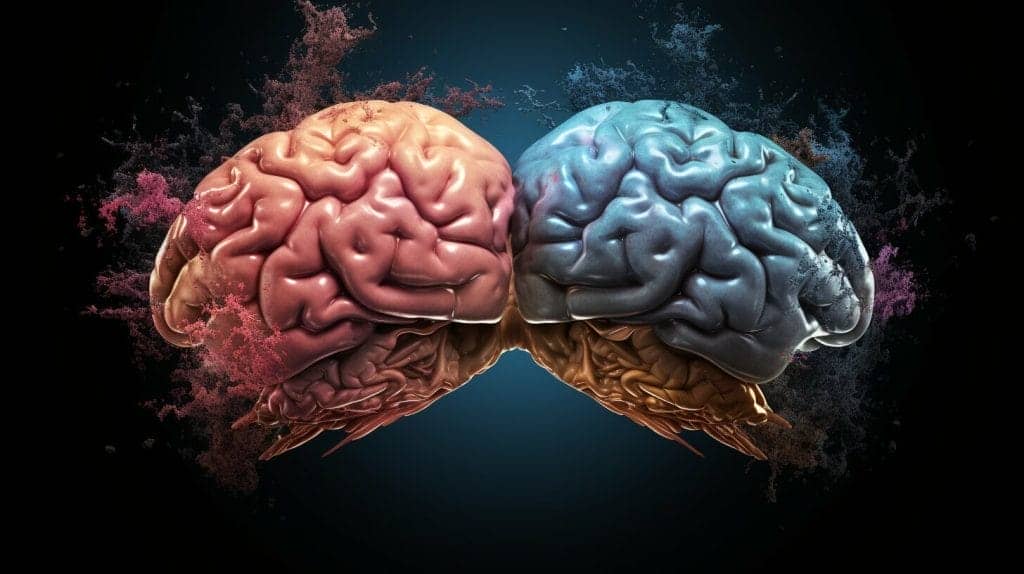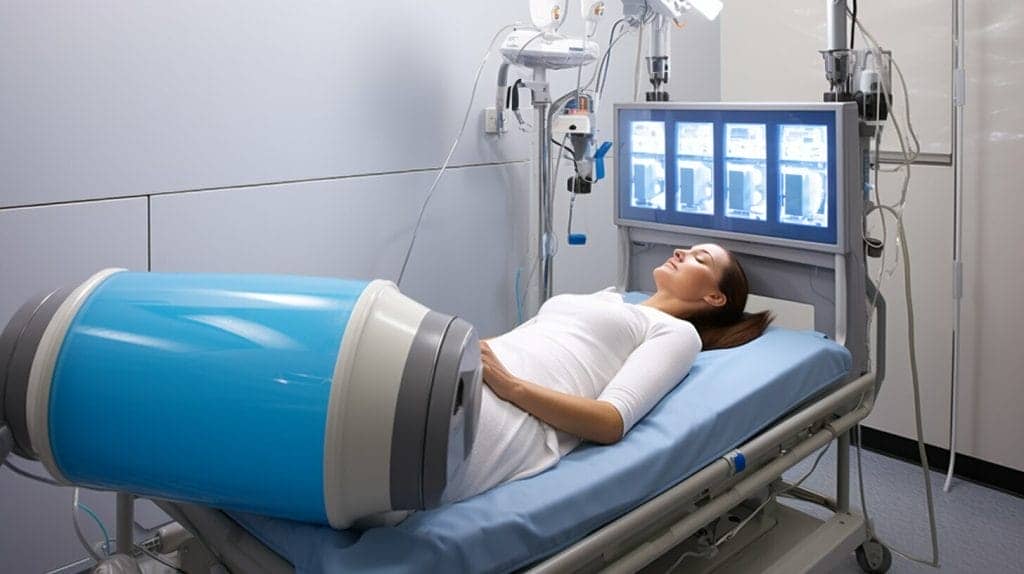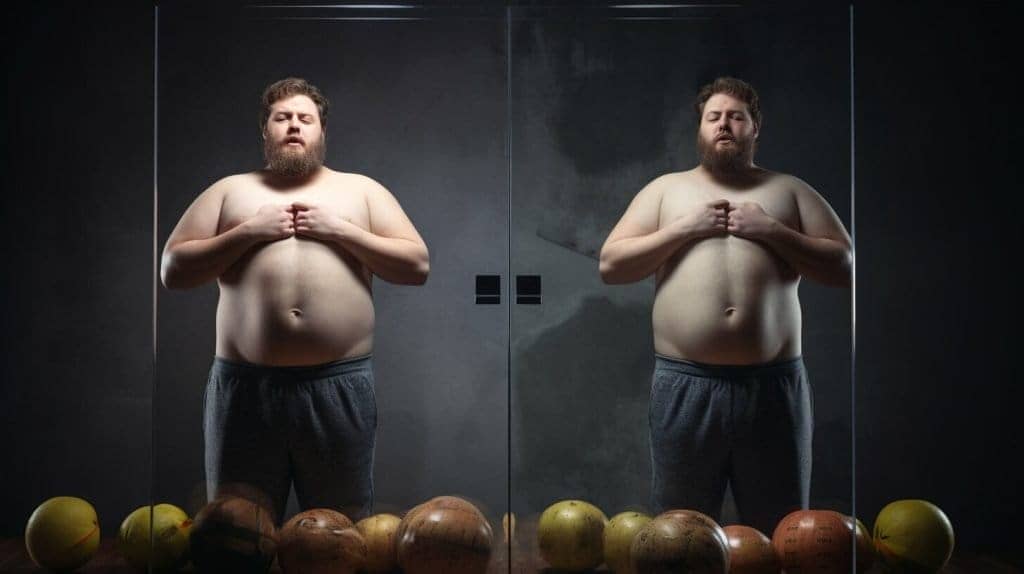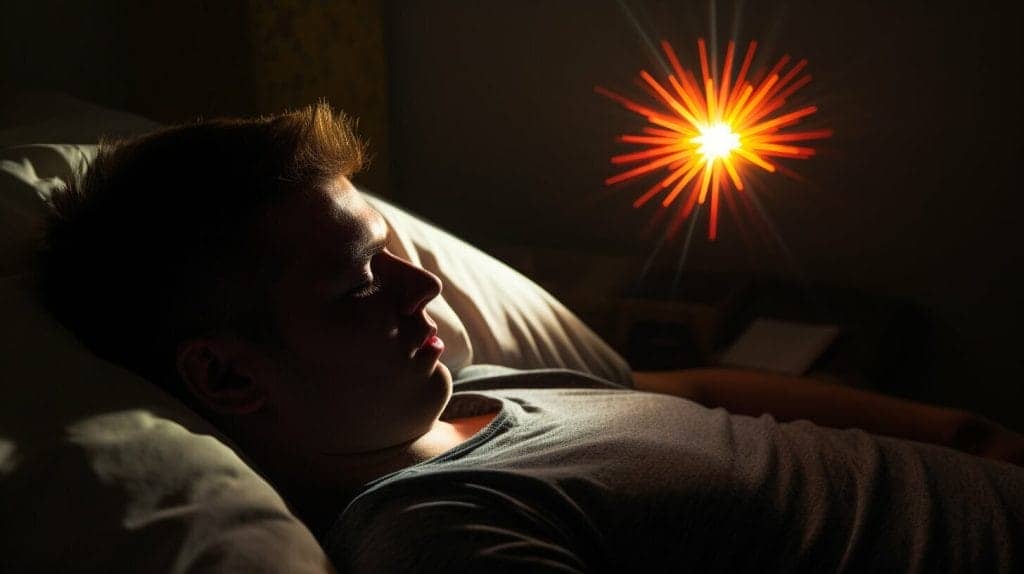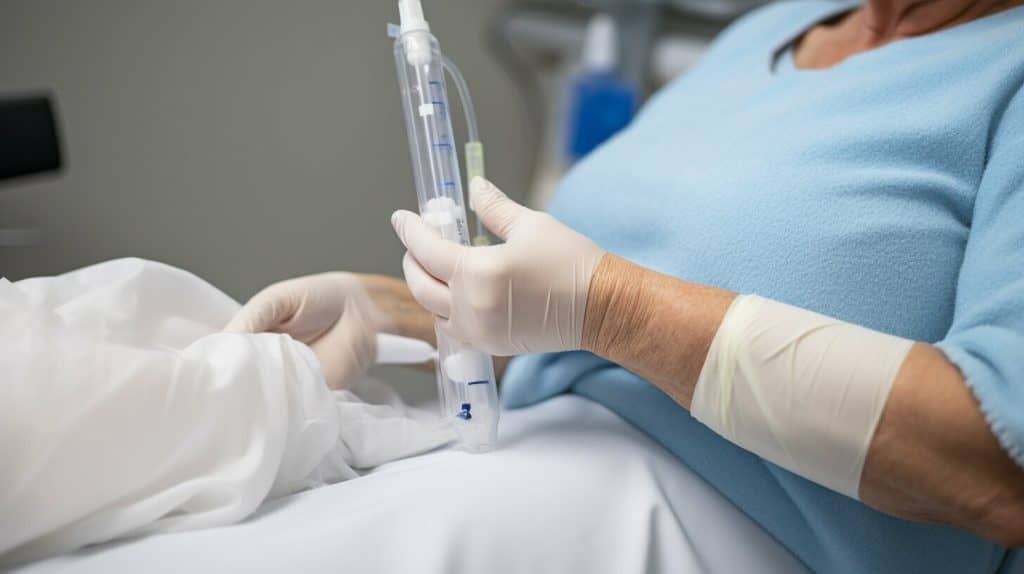The COVID-19 pandemic has drastically changed daily life, including exercise routines. As individuals recover from the virus or adjust to new health guidelines, many wonder whether it is safe to continue exercising. The good news is, with proper precautions and modifications, exercise can be safely incorporated into one’s routine.
In this article, we will explore the impact of COVID-19 on exercise, safe activities for exercising during the pandemic, and the benefits of holistic treatments and mind-body practices. We will also address common questions and concerns related to exercising with COVID-19 and provide tips for staying motivated and maintaining overall health.
Key Takeaways:
- Exercise can be safely incorporated into one’s routine during the COVID-19 pandemic.
- Low-impact exercises, such as yoga or walking, can be done at home or in outdoor settings.
- Holistic treatments can support COVID-19 recovery.
- Mind-body practices, such as meditation, can reduce stress and boost overall well-being.
- Consult with a healthcare professional before resuming exercise after contracting COVID-19.
Understanding COVID-19 and its Impact on Exercise
COVID-19 is a highly contagious virus that affects the respiratory system. The virus spreads through respiratory droplets released when an infected person talks, coughs, or sneezes. It can also spread by touching a surface contaminated with the virus and then touching your mouth, nose, or eyes.
When it comes to exercise, COVID-19 can have a significant impact on the body, particularly the respiratory system. The virus can cause shortness of breath, chest pain, and a persistent cough, making physical activity challenging and potentially dangerous.
For this reason, health authorities have provided guidelines to help individuals safely workout during the pandemic. These guidelines include recommendations to wear masks, maintain social distancing, and avoid public spaces.
Safe Activities for Exercising with COVID
Exercising during COVID-19 can be challenging, especially for those who are recovering from the virus. However, it is essential to maintain physical fitness to boost overall health and immune function. Here are some safe activities that individuals can consider:
| Activities | Description |
|---|---|
| Walking | Walking is a low-impact exercise that can be done indoors or outdoors. It is a great way to increase cardiovascular health with minimal risk of exposure. |
| Cycling | Cycling is another low-impact exercise that can be done outdoors. It can help improve cardiovascular health and reduce stress levels. |
| Yoga | Yoga is a gentle form of exercise that can be done at home or in a private outdoor space. It helps reduce stress and improve flexibility. |
| Resistance Training | Resistance training can be done at home with minimal equipment, such as resistance bands. It helps maintain muscle mass and bone density. |
It is important to note that individuals should consult with a healthcare professional before beginning any exercise regimen, especially if they have underlying health conditions or are recovering from COVID-19.
Importance of Holistic Treatments for COVID-19
While traditional medicine plays a critical role in treating COVID-19, it is equally important to explore holistic therapies that support the body’s natural healing mechanisms. Holistic treatments, such as acupuncture, herbal medicine, and nutritional therapy, can complement conventional medical interventions and help alleviate symptoms, boost immunity, and improve overall well-being.
“With COVID-19, it is not just about treating the virus itself, but also addressing the physical and emotional toll it takes on patients,” says Dr. Francisco Contreras MD, the medical director of Oasis Medical Institute.
At Oasis Medical Institute in Tijuana, MX, a team of experienced healthcare professionals offers a comprehensive approach to COVID-19 treatment that combines traditional and alternative therapies. The facility’s integrative approach recognizes the interconnectedness of mind, body, and spirit, and prioritizes individualized care that meets each patient’s unique needs and goals.
Oasis Medical Institute: A Comprehensive Approach to COVID-19 Treatment
For individuals seeking a comprehensive, integrative approach to COVID-19 treatment, Oasis Medical Institute offers a range of services designed to support the body’s natural healing processes.
At Oasis Medical Institute, medical director Dr. Francisco Contreras MD leads a team of healthcare professionals with expertise in traditional and holistic medicine. Their treatment program for COVID-19 combines evidence-based treatments with complementary therapies, such as nutrition counseling, spiritual care, and acupuncture, to promote overall wellness and recovery.
If you or a loved one are interested in learning more about Oasis Medical Institute’s COVID-19 treatment program, you can schedule a consultation by calling 866-868-1992. Our team is committed to providing personalized, compassionate care to each patient, and we are here to support you on your journey to recovery.
Exercise Recommendations during COVID-19 Recovery
For individuals recovering from COVID-19, it’s important to start exercising gradually and listen to their bodies. The Centers for Disease Control and Prevention (CDC) recommends waiting until it’s been at least 10 days since the first symptoms appeared, at least 24 hours have passed with no fever, and symptoms have improved before resuming physical activity. Additionally, it’s recommended to consult with a healthcare professional before starting or resuming an exercise routine.
Here are some exercise recommendations for individuals recovering from COVID-19:
- Begin with low-impact exercises: Gentle activities such as walking, yoga, or stretching can help improve mobility and cardiovascular health without putting too much strain on the body. Start with shorter durations and gradually increase the intensity and duration of workouts as tolerated.
- Incorporate breathing exercises: COVID-19 can affect the respiratory system, so incorporating breathing exercises into an exercise routine can help improve lung function and reduce shortness of breath. Practicing deep breathing, pursed-lip breathing, or diaphragmatic breathing can help improve breathing capacity and control.
- Hydrate and fuel the body: It’s important to stay hydrated and well-nourished during exercise, especially during COVID-19 recovery. Drinking enough water and consuming nutrient-dense foods can help boost energy levels and support the immune system.
- Avoid overexertion: It’s important to listen to the body’s signs of fatigue or discomfort and avoid overexertion. Rest as needed during workouts, and make adjustments as necessary to avoid pushing too hard.
- Consider virtual exercise classes: Virtual exercise classes can provide a structured workout routine that can be done from the comfort of home. Many gyms and studios offer virtual classes, including yoga, aerobics, and Pilates, which can be adapted to individual fitness levels and needs.
- Practice self-care: It’s important to prioritize self-care during COVID-19 recovery. This includes getting enough rest, managing stress, and practicing mindfulness. Taking care of the body and mind can help support overall recovery and well-being.
Precautions for Exercising Safely with COVID-19
While exercise is an important aspect of maintaining physical health, individuals should take precautions when exercising with COVID-19. The virus can impact the respiratory system, making it difficult to breathe during physical activity. Additionally, infected individuals may spread the virus to others through respiratory droplets, increasing the risk of transmission in public spaces.
Before resuming exercise, it is recommended that individuals consult with a healthcare professional to ensure that it is safe to do so. Depending on the severity of the infection and symptoms, exercise may need to be modified or postponed until recovery is complete.
When exercising while infected with COVID-19, it is important to take specific precautions to protect oneself and others:
| Precaution | Description |
|---|---|
| Avoid public spaces | Exercising alone or with members of the same household can minimize the risk of transmission to others. |
| Wear a mask | A mask can reduce the spread of respiratory droplets, protecting others during exercise. However, it may be difficult to breathe during intense physical activity, so individuals may need to adjust the type or intensity of exercise. |
| Maintain social distancing | Staying at least six feet away from others during exercise can minimize the risk of transmission. |
Individuals with COVID-19 should also monitor their symptoms during exercise and stop if they experience fatigue, shortness of breath, or any other discomfort. It is important to prioritize rest and recovery during this time.
Further Precautions
If individuals are unsure if it is safe to exercise with COVID-19, they should refrain from physical activity until they have consulted with a healthcare professional. High-risk individuals, such as those with underlying health conditions or who are over 65 years old, should take extra precautions when exercising during the pandemic.
By taking these precautions and consulting with healthcare professionals, individuals can safely exercise during the pandemic and reduce the risk of transmission to themselves and others.
Modified Workouts for COVID-19 Patients
Individuals recovering from COVID-19 may experience fatigue, shortness of breath, and muscle weakness, which can make exercise challenging. To support the recovery process, it’s essential to engage in light-to-moderate physical activity that gradually increases over time.
Aim to start with low-impact exercises that don’t put too much stress on the body, such as:
- Walking at a slow pace
- Stretching
- Yoga or Pilates
- Light resistance training with bodyweight or bands
It’s also important to prioritize exercises that support respiratory health, such as deep breathing exercises and gentle movements that promote blood flow and oxygenation.
As symptoms improve, gradually increase the intensity and duration of workouts. However, it’s crucial to listen to the body’s signals and not push too hard too fast. Consult with a healthcare professional before resuming exercise to ensure it’s safe to do so.
Incorporating Mind-Body Practices into Exercise Routine
During the COVID-19 pandemic, incorporating mind-body practices into one’s exercise routine can provide numerous benefits for both physical and mental health. Mind-body practices, such as yoga, meditation, and tai chi, focus on connecting the mind and body through movement and breath work.
Research has shown that these practices can help reduce stress and anxiety, improve sleep quality, and enhance overall well-being. Additionally, these practices can be done at home with little to no equipment, making them a safe and accessible option during the pandemic.
When incorporating mind-body practices into your exercise routine, it’s important to start slowly and listen to your body. Remember that these practices are meant to be gentle and relaxing, not strenuous. Consider finding a qualified instructor to guide you through the movements to ensure proper form and technique.
Benefits of Mind-Body Practices
Here are some of the benefits of incorporating mind-body practices into your exercise routine:
- Reduced stress and anxiety
- Improved sleep quality
- Enhanced ability to manage pain
- Improved flexibility and balance
- Reduced risk of injury
- Increased self-awareness and mindfulness
Overall, incorporating mind-body practices into your exercise routine can provide a multitude of benefits for both physical and mental health during the COVID-19 pandemic. Remember to start slowly, listen to your body, and seek guidance from a qualified instructor if needed.
Mental Health Benefits of Exercise during COVID-19
The COVID-19 pandemic has not only taken a physical toll on individuals, but also a mental one. The stress and anxiety associated with the pandemic have led to an increase in mental health concerns, including depression and anxiety. However, exercise has been shown to have a positive impact on mental health, especially during times of stress.
Research has shown that exercise can help reduce symptoms of depression and anxiety by releasing endorphins, which are the body’s natural feel-good chemicals. Additionally, exercise can help improve sleep quality, reduce stress levels, and enhance overall cognitive function. These benefits are especially important during the COVID-19 pandemic, when many individuals are facing increased levels of stress and uncertainty.
Furthermore, incorporating mind-body practices such as yoga and meditation into an exercise routine can provide additional benefits for mental health. These practices have been shown to reduce stress and anxiety, improve mood, and promote overall well-being.
Overall, exercise can be an effective tool for managing mental health during the COVID-19 pandemic. By prioritizing physical activity and incorporating mind-body practices, individuals can reduce stress levels and boost overall well-being.
FAQs about Exercising with COVID-19
With the ongoing pandemic, many individuals have questions about exercising and staying active while managing COVID-19. Below are answers to some of the most frequently asked questions:
1. Can I exercise while recovering from COVID-19?
It is possible to exercise while recovering from COVID-19, but it’s important to consult with a healthcare professional first. Start with low-impact activities and gradually increase the intensity and duration of workouts as symptoms improve. Listen to your body and avoid overexertion.
2. What are some safe activities I can do while managing COVID-19?
Low-impact exercises such as walking, yoga, and stretching can be done while managing COVID-19. Avoid high-intensity workouts that could put stress on the respiratory system. It’s also important to exercise in a safe environment, either at home or outside while maintaining social distancing.
3. What precautions should I take when exercising with COVID-19?
Individuals with COVID-19 should avoid public spaces and wear a mask when exercising. Stay at least six feet away from others and do not share equipment or water bottles. It’s important to consult with a healthcare professional before resuming exercise.
4. When is the best time to exercise during COVID-19?
The best time to exercise during COVID-19 is when you feel up to it and have consulted with a healthcare professional. It’s important to listen to your body and avoid overexertion, especially when recovering from COVID-19.
5. What are the risks of exercising with COVID-19?
Exercising with COVID-19 can potentially worsen the symptoms and put additional stress on the respiratory system. It’s important to consult with a healthcare professional and follow safety guidelines when exercising while managing COVID-19.
Staying Motivated to Exercise during the Pandemic
Staying motivated to exercise during the COVID-19 pandemic can be a challenge, especially with gyms and fitness studios closed or operating at limited capacity. However, maintaining physical activity is crucial for overall health and well-being, and there are ways to stay motivated despite the current circumstances.
Set Realistic Goals
Setting achievable goals is key to staying motivated. Rather than aiming for a complete workout overhaul, start with small, attainable goals, such as taking a daily walk or doing a quick yoga routine. This can help build momentum and establish a consistent routine.
Find Enjoyable Activities
One of the biggest barriers to exercise can be boredom or lack of interest. To combat this, try out new activities or find ways to make existing workouts more enjoyable. This could include trying a new outdoor sport or activity, listening to music or podcasts during a workout, or working out with friends virtually.
Establish a Consistent Routine
Establishing a consistent exercise routine can help make working out a habit rather than a chore. Set a regular time for workouts and schedule them into your day like any other appointment. This can help create a sense of structure and accountability.
Practice Self-Care and Self-Compassion
Finally, remember to practice self-care and self-compassion throughout the pandemic. This includes being gentle with yourself if you miss a workout or have a setback, as well as prioritizing rest and recovery when needed. Taking care of your mental health and well-being is just as important as physical activity.
Maintaining Overall Health during COVID-19
Exercise plays a crucial role in maintaining overall health, particularly during the COVID-19 pandemic. Physical activity can help boost the immune system, improve cardiovascular health, and enhance respiratory function, all of which are important for preventing and managing COVID-19.
It is important to prioritize exercise as part of a holistic approach to health during this time. However, it is equally important to follow health guidelines and precautions to ensure safe workouts. This includes consulting with a healthcare professional before resuming exercise, avoiding public spaces, wearing masks, and maintaining social distancing when exercising.
For individuals recovering from COVID-19, it is important to gradually increase activity levels and listen to the body’s signs of fatigue or discomfort. Incorporating mind-body practices such as yoga or meditation into the exercise routine can also be beneficial for reducing stress and boosting overall well-being.
Overall, exercise is an essential component of maintaining physical and mental health during the pandemic. By prioritizing a consistent exercise routine and following health guidelines, individuals can support their overall well-being and reduce the impact of COVID-19 on their health.
Conclusion
Exercising during COVID-19 may seem challenging, but it is essential for maintaining physical and mental health. By following the guidelines provided by health authorities and consulting with healthcare professionals, individuals can safely engage in physical activity while recovering from COVID-19 or during the pandemic.
At Oasis Medical Institute in Tijuana, MX, individuals can receive comprehensive COVID-19 treatment that combines traditional medicine with holistic therapies. Led by medical director Dr. Francisco Contreras MD, Oasis Medical Institute offers a range of services to support COVID-19 recovery, including exercise recommendations and mind-body practices.
Whether recovering from COVID-19 or looking to prioritize overall health during the pandemic, Oasis Medical Institute is committed to providing personalized care and support. Book a consultation today by calling 866-868-1992.
Oasis Medical Institute: Your Partner in COVID-19 Recovery
For those seeking comprehensive COVID-19 treatment, Oasis Medical Institute offers a wide range of integrative and holistic therapies. Under the guidance of medical director Dr. Francisco Contreras MD, the institute’s team of experts provides personalized care to support patients in their recovery.
If you or a loved one are seeking COVID-19 treatment, you can book a consultation with Oasis Medical Institute by calling 866-868-1992. Our team is dedicated to providing safe and effective care during these challenging times.
FAQ
Q: Can I exercise with COVID?
A: Yes, it is generally safe to exercise with COVID as long as you follow the health guidelines and consult with a healthcare professional.
Q: What are the safe activities for exercising with COVID?
A: Safe activities for exercising with COVID include low-impact exercises such as walking, yoga, and gentle stretching. It is also recommended to exercise at home or in outdoor settings.
Q: What are the precautions for exercising safely with COVID-19?
A: Precautions for exercising safely with COVID-19 include avoiding public spaces, wearing masks, maintaining social distancing, and consulting with a healthcare professional before resuming exercise.
Q: What are some modified workouts for COVID-19 patients?
A: Modified workouts for COVID-19 patients may include exercises that focus on respiratory health and gentle movements. It is important to consider potential limitations and symptoms when designing a workout routine.
Q: How can I incorporate mind-body practices into my exercise routine?
A: You can incorporate mind-body practices such as yoga or meditation into your exercise routine to reduce stress and enhance overall well-being. These practices can be done at home and require minimal equipment.
Q: What are the mental health benefits of exercise during COVID-19?
A: Exercise has been shown to reduce stress, improve mood, and enhance cognitive function, providing important mental health benefits during the pandemic. Maintaining a consistent exercise routine is key.
Q: What are some common questions and concerns about exercising with COVID-19?
A: Common questions and concerns about exercising with COVID-19 include the appropriate duration and intensity of workouts, the best time to exercise, and the potential risks of overexertion.
Q: How can I stay motivated to exercise during the pandemic?
A: To stay motivated to exercise during the pandemic, it is important to set realistic goals, find enjoyable activities, establish a consistent routine, and prioritize self-care and self-compassion.
Q: What is the role of exercise in maintaining overall health during COVID-19?
A: Exercise plays a vital role in maintaining overall health during COVID-19 by boosting the immune system, improving cardiovascular health, and enhancing respiratory function.
Dr. Francisco Contreras, MD is a renowned integrative medical physician with over 20 years of dedicated experience in the field of integrative medicine. As the Medical Director of the Oasis of Hope Hospital in Tijuana, Mexico, he has pioneered innovative treatments and integrative approaches that have been recognized globally for the treatment of cancer, Lyme Disease, Mold Toxicity, and chronic disease using alternative treatment modalities. Dr. Contreras holds a medical degree from the Autonomous University of Mexico in Toluca, and speciality in surgical oncology from the University of Vienna in Austria.
Under his visionary leadership, the Oasis of Hope Hospital has emerged as a leading institution, renowned for its innovative treatments and patient-centric approach for treating cancer, Lyme Disease, Mold Toxicity, Long-Haul COVID, and chronic disease. The hospital, under Dr. Contreras's guidance, has successfully treated thousands of patients, many of whom traveled from different parts of the world, seeking the unique and compassionate care the institution offers.
Dr. Contreras has contributed to numerous research papers, articles, and medical journals, solidifying his expertise in the realm of integrative medicine. His commitment to patient care and evidence-based treatments has earned him a reputation for trustworthiness and excellence. Dr. Contreras is frequently invited to speak at international conferences and has been featured on CNN, WMAR2 News, KGUN9 News, Tyent USA, and various others for his groundbreaking work. His dedication to the medical community and his patients is unwavering, making him a leading authority in the field.
Contreras has authored and co-authored several books concerning integrative therapy, cancer, Lyme Disease and heart disease prevention and chronic illness, including "The Art Science of Undermining Cancer", "The Art & Science of Undermining Cancer: Strategies to Slow, Control, Reverse", "Look Younger, Live Longer: 10 Steps to Reverse Aging and Live a Vibrant Life", "The Coming Cancer Cure Your Guide to effective alternative, conventional and integrative therapies", "Hope Medicine & Healing", "Health in the 21st Century: Will Doctors Survive?", "Healthy Heart: An alternative guide to a healthy heart", “The Hope of Living Cancer Free”, “Hope Of Living Long And Well: 10 Steps to look younger, feel better, live longer” “Fighting Cancer 20 Different Ways”, "50 Critical Cancer Answers: Your Personal Battle Plan for Beating Cancer", "To Beat . . . Or Not to Beat?", and “Dismantling Cancer.”









